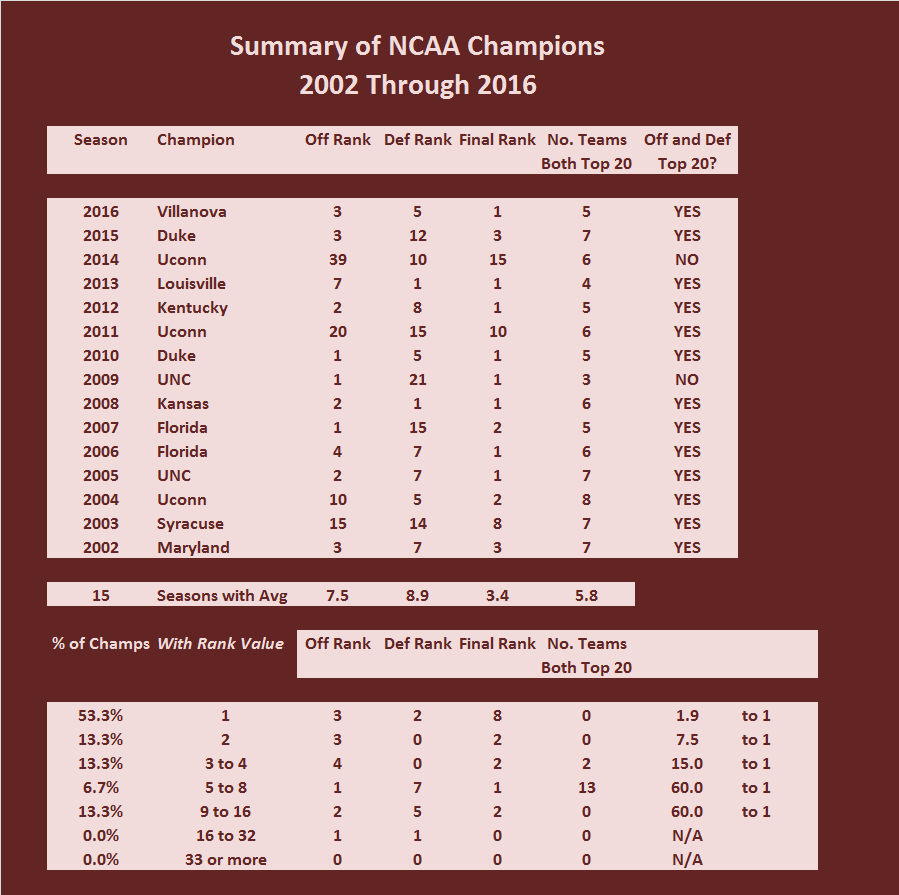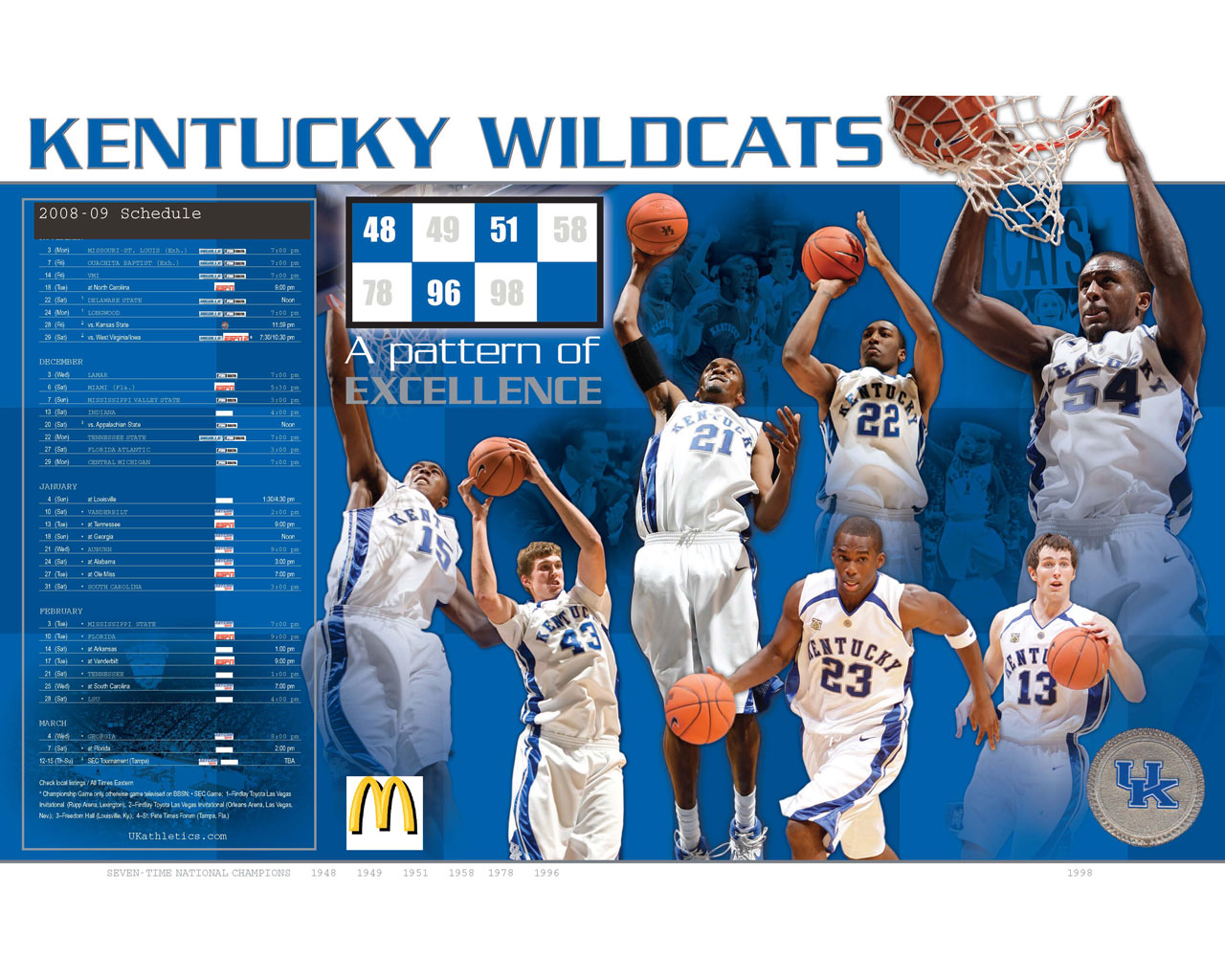BIG BLUE FANS FOR

BASKETBALL
2015-16 Season Analytical Writings
20A
EFFICIENCY BASED PROFILES OF NCAA TOURNAMENT CHAMPIONS
2002 THROUGH 2016
It Pays To Be Most Efficient!
Here we are at the mid-point of the 2016-17 college basketball season, and this morning's Pomeroy rankings have Kentucky #1, West Virginia #2, Villanova #3, Gonzaga #4, UNC #5, Kansas #6, Baylor #8, Wisconsin #9, and Louisville #10. On many prior occasions, I have pointed out that the NCAA Champion is usually the #1 most efficient team (Pomeroy Ranking), and if not #1, then #2. Furthermore, many people have observed that the NCAA Champion does not win based solely on offensive efficiency or defensive proficiency, but a combination of the two. Let's examine the facts.
The following table provides an efficiency based profile of the last 15 NCAA Tournament Champions (2002 through 2016). The information includes the final offensive efficiency rank, final defensive efficiency rank, the final efficiency based rank, the number of teams in that season having top 20 offensive and defensive efficiency, and a determination whether the Champion meets this criteria. The bottom portion of the table provides the rank distribution for #1, #2, #3 or #4, #5 through #8, #9 through #16, #16 through #32, and for ranks greater than #32.

Table 1 Efficiency Based Profile of NCAA Champions
Eight of the last fifteen NCAA Champions ended the season as the #1 most efficiency team (Pomeroy) and two others were ranked #2. Two more of these fifteen champions were either #3 or #4. That is twelve of fifteen champions ranked as a top four team, having a legitimate claim to a #1 Tournament Seed even though the NCAA selection committee does not reward the top four teams with number 1 seed (11 of 15 tournaments did not seed the top four teams in a #1 position). For example, in 2016, despite having the highest efficiency, Villanova did not receive a #1 seed from the Committee.
Based on this fifteen-year history, the #1 efficiency teams have a 1.9:1 probability of winning the tournament. The #2 most efficient teams have a 7.5 to 1 probability, while the #3 and #4 teams have a 15:1 probability. Teams that fall outside these top four positions are not without hope in the post season, but that hope is slim. For teams ranked #5 and less than #16, the probability of winning the championship rises to about 60:1.
Thirteen of these fifteen champions ended the season with an offensive and defensive efficiency in the top 20. The two exceptions to this criterion were Connecticut in 2004 and North Carolina in 2009. In 2009, UNC's defensive efficiency barely missed the criteria at #21 and 2009 had the fewest number of teams at the end of the season that satisfied the criteria, 3. While 2009 is an outlier, it is not particularly surprising given UNC's #21 defensive ranking AND only three teams in the entire field that satisfied this criterion. The most significant exception to this criterion has been the 2004 Connecticut team that finished with 39 th best offense, 10 th best defense, and a #15 final rank.
Based on this history, I really like Kentucky's chances in 2017!!!!
Submitted by Richard Cheeks


Submitted by Richard Cheeks
![]()
To Cats Put 5-0 SEC Start On Line At Mississippi State
Go Back
To Cats Beat Auburn by 20
Copyright 2017
SugarHill Communications of Kentucky
All Rights Reserved